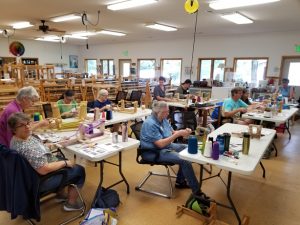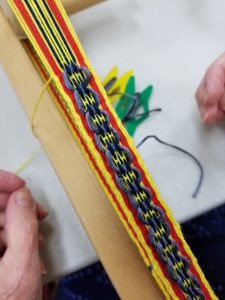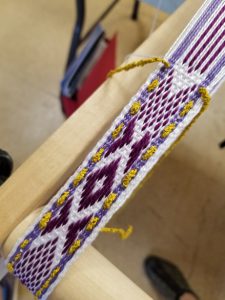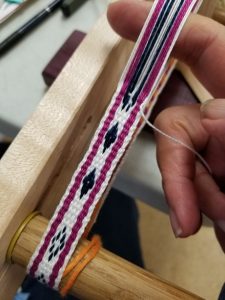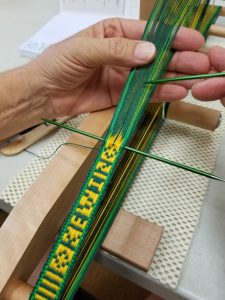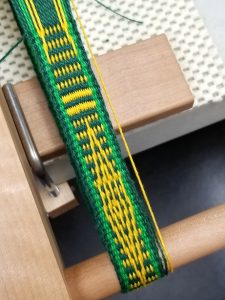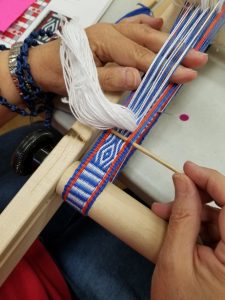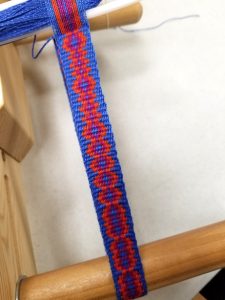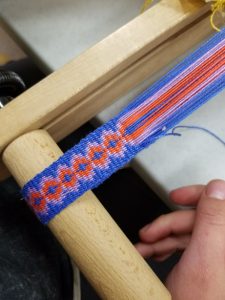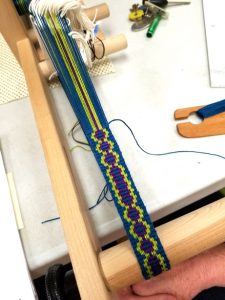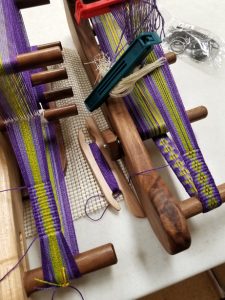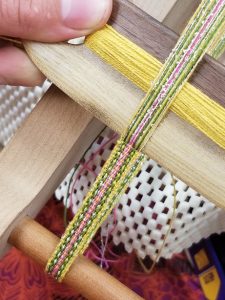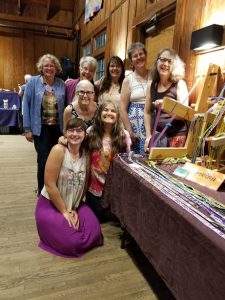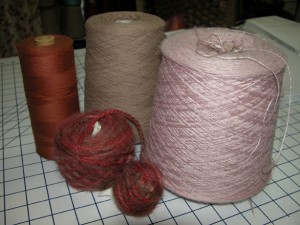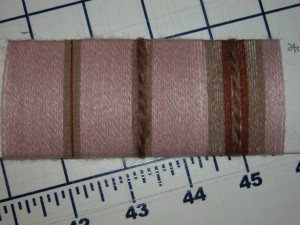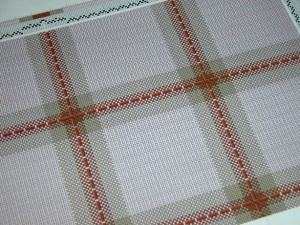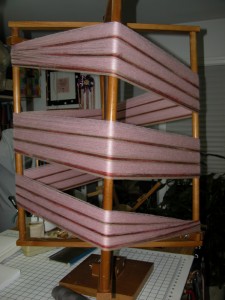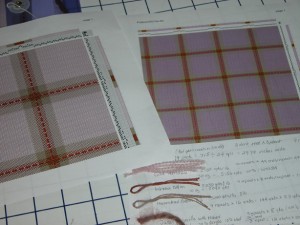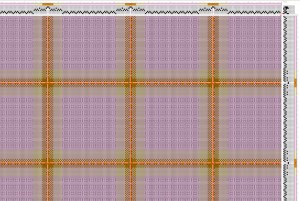What a week. I’m not sure where to begin, except to say right up front I’m home safe in NJ, for now.
I left a week ago for Atlanta, and on to John C Campbell, a folk school in the Appalachian mountains in the western corner of NC where they meet TN and GA. We had heavy thunderstorms almost every day, but they were unrelated to what was happening in the Atlantic. The folk school is gorgeous, magical, and I can see why it is a popular place to learn craft. I am so grateful to add this to my resume, my students, the facility, the food, housing, staff and infrastructure were all wonderful and encouraging and promoting of creativity and inspiration.
I took a break from teaching my regular garment construction intensive, and taught a five day inkle weaving intensive. I don’t think I am capable anymore of teaching anything but an intensive. I work my students hard. I don’t think anyone has ever complained that they didn’t get their money’s worth in one of my classes. And this one in particular was pretty challenging, especially if you had little or no weaving experience. I started students off, (there were 10 of them) learning about the inkle loom, and how to set it up efficiently and how to weave a competent band. By lunch the first day, they were all right there and doing really well.
Then I introduced supplemental weft, which was lots of fun and very creative.
Followed by supplemental warp.
The afternoon of the first day we tackled what at first seemed challenging, but by the time the class ended, everyone was thinking that this technique was really elementary! This is a 2:1 pick up, often called Baltic. Most students did the designs on five thread, a couple with more experience managed 9 thread.
On Tuesday we rewarped the looms, using complementary warps, light vs. dark. The first technique was name drafts, which again, seemed so hard at the time, but by the end, students were returning to the name draft for a bit of a break!
Then we explored pebble weave, some simple diamonds, each technique building on the previous one.
It became pretty obvious that there was some serious stuff happening in the Atlantic, and one of the students lived on the coast and decided to leave after lunch on Wednesday, to head back to retrieve her animals so she could evacuate. I saw a lot of very nervous students, trying to decide what to do. Meanwhile there were heavy thunderstorms throughout my stay, which resulted in some pretty awesome rainbows.
Next up was a free form technique or Runic as Ann Dixon calls it. I explained the basics of how it was done, and students just made up their designs. Many of the techniques are adapted from Ann Dixon’s book of Inkle loom patterns, I make up the patterns for them to use, but encourage them to buy her book for more ideas. Most had a copy by the time the class ended.
Wednesday afternoon they were ready to tackle Paired Pebbles, which is an Andean technique, and one of my favorites. Laverne Waddington publishes many books of patterns, usually done on the backstrap loom, but very doable on an inkle loom. Students were all copying the links so they could order for themselves. Laverne’s books are available as downloads from Patternfish.com.
Thursday morning we rewarped the loom, and you could see how exhausted everyone was, but I saved the best for last, and once everyone caught on, there were some really pretty designs using a three shaft technique called Turned Krokbragd.
One of my students Margaret rewarped a companion loom to coordinate with her Krokbragd piece, so she had these beautiful small inkle looms, handmade from gorgeous woods, which she had bought on the internet.
I had a mom and daughter team, which was so wonderful and sweet to watch, sort of like watching my daughter and me in a workshop together. Sarah, like my daughter, though she had no previous weaving experience, ran rings around everyone in the room. To be young again with all that stamina and energy. At one point, late one afternoon they asked if they could just warp up something simple, like shoe laces. I had showed the link for the article my daughter wrote 10 years ago when she was just 15, for an online magazine called Weavezine. Though the magazine is not in publication anymore, the archives are still there, and they went off and downloaded the article. Next thing I new, they were both happily weaving off a pair of shoelaces each.
Everyday at the folk school is magical, from the well maintained wooded paths, to early morning song where local folk singers come to perform, to Tuesday yoga, demonstrations, concerts, and stuff that was hard to fit in sometimes. I tried to keep the studio open in the evenings, so students could concentrate better with less distraction. The last day was graduation day, and each of the dozen classes that happened during the week, from clay and woodturning, to blacksmithing, enameling, painting and photography, had a show and tell of students accomplishments for the week. The dulcimer students gave a lovely performance singing and playing in a round. My class set up their table with looms still in progress and a stunning array of bands, they were so proud of what they had done. The class photo was missing a few students, some had already left to beat the storm, but the joy and pride was evident on their faces.
All of these technique are available as a download and as a bound monograph on my website in my book, Advanced Inkle Loom Techniques.
I had planned to stay on for the weekend to take a sketchbooking class. As I followed the path of Florence, it became apparent that it was headed for the folk school and though I didn’t think the storm would directly affect operations, maybe knocking out the WIFI, I was worried that the storm would graze Atlanta and I wouldn’t get out Sunday night. With a turn around flight Wednesday to Sievers in Wisconsin, I decided not to chance it and rebooked my flight to Friday night (thank you United for not charging me to rebook) and took off shortly after the presentation, hopped the shuttle to the airport and made it home safely and uneventfully by late Friday night. Oddly enough, the storm is veering back toward the Atlantic, heading right over NJ, and I’m hoping the rain and wind are finished before I fly Wednesday morning. Crossing fingers.
Stay tuned…
